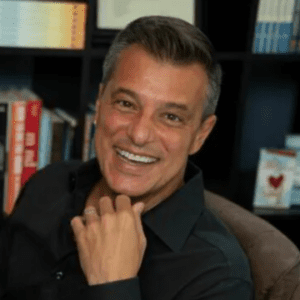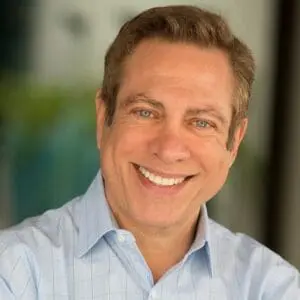Time heals all wounds, the poets have written, but is that really the case when we lose a loved one? While grief professionals classify the first two years of mourning as early grief, many of them—and their clients—are keenly aware that grief changes our very concept of time altogether. Grief makes us cover up our clocks and mirrors. It makes us stop our watches at the exact moment when someone’s heart stopped beating, a resonant symbol of our longing for more time with them. It makes us plant flowers in their honor as the seasons change. And sometimes, it even makes us dread those seasons.
Recently, the American Psychiatric Association has put grief on a deadline. At a time when many people are experiencing immense and profound loss, some clinicians have begun to classify grieving processes that extend beyond a period of one year as symptomatic of prolonged grief disorder.
In some ways, this diagnostic addition to the DSM may benefit people who would’ve otherwise struggled to find affordable care; after all, the changes to the DSM mean that insurance companies now view this form of anguish and human suffering as a billable condition. Perhaps employers will even reconsider current limits on bereavement leave. And for the many grieving people whose pain has been long-lasting, and sometimes all-consuming, it reifies the suffering they may feel they’ve been asked to deny.
In other ways, because the diagnosis and its timestamp seem to pathologize a critical component of the human experience, it may send an implicit message—get over it—to these people, who already need therapeutic support.
In March, The New York Times published a piece on this new diagnosis, called “How Long Should It Take to Grieve?” Voices of those in favor or against the development were later included in the widely read and fiery opinion-page piece, “Prolonged Grief: A Mental Disorder or a Natural Process?” Here, Psychotherapy Networker’s Zach Taylor spoke with grief and trauma experts David Kessler, Donna Schuurman, and Frank Anderson about the pros and cons of the diagnosis for clients and the field itself.
– – – –
David Kessler: For me, grief is love—it’s a love letter to those who have died, and it lasts the rest of our lives. Prolonged grief disorder feels like it pathologizes an experience of love.
Five years ago, I lost my younger son. I’ve been in the grief field for decades, but that experience made me want to call every person I’ve ever counseled, especially parents, to tell them that I get how bad the pain is now—how intense it is, how long it lasts. But I’m afraid this new diagnosis is perpetuating an idea that we need to help people “get over it,” and that isn’t what grief professionals or people in grief want to do. We don’t get over our loved ones: they aren’t colds or flus.
Donna Schuurman: I’ve listened to children and their families who are grieving after the death of a family member for over 31 years, at The Dougy Center in Portland, Oregon, as well as throughout the world, following human-caused and natural disasters. All the symptoms the DSM lists are normal responses to grief. Some people may need professional support to deal with them, but there are ways to help people without having to pathologize them. I’m afraid the diagnosis will be overused, stigmatize grief, and set us back in terms of our understanding of the lifelong impact of death.
Frank Anderson: I’m somebody with a trauma history, who’s spent my career working with people with complex PTSD or relational trauma histories. I know that when you’re repeatedly relationally violated, you experience a lot of loss. For example, every time Dad gets drunk or Mom rages and screams, you lose a safe parent. And then when they die, the current loss is amplified by the past trauma. It’s experienced as a double trauma or an accumulation of losses.
Often, an underlying attachment trauma comes with grief. It can be preverbal in nature and held in the body through symptoms or physical sensations. It’s hard for many clients to articulate or put these experiences into words. So, in my work, I’ll explore through body work whether something like attachment trauma is being activated when someone is experiencing “prolonged” grief.
As a psychiatrist, I find the idea of giving drugs for grief concerning. There’s not a lot of overlap between depression and grief, so the inclination some may have to quickly give an antidepressant because someone has this diagnosis worries me. In some circumstances, it may be warranted, but the greater risk is to overdo treatment with medications for something that needs to be processed and worked through.
Schuurman: They’re even testing drugs, like naltrexone, to treat grief as an addiction.
The concept of treating it as an addiction is based on a study that Mary-Frances O’Connor and colleagues did called Craving Love. They showed 23 women photos of their mother or sister who’d died of breast cancer, then measured their brain activity in an fMRI. They found the nucleus accumbens in the brains of the 11 women who’d been diagnosed with “complicated grief” lit up and stayed lit up longer than those of the other women.
The hypothesis is that people who have prolonged grief disorder are craving their loved ones due to the positive reinforcement provided by the memories of the loved one. In essence, they’re addicted to the memory of the lost loved one.
Kessler: Donna, repeat the number of people in that study again.
Schuurman: Twenty-three. It’s being touted as a scientific study that undergirds this diagnosis and merits drug treatment, and I think that’s really concerning.
When the study was done, Jerry Adler, who’d experienced the death of his son Max, wrote a commentary in Newsweek magazine. He said he’d never seen a nucleus accumbens, but he was acquainted with grief, and he can’t help but wonder if those women just love their mothers or sisters more.
Zach Taylor: People come to us for grief that feels oppressive. Doesn’t this new diagnosis open the door for more people to get professional help? If they don’t meet the criteria for depression or PTSD, they can now get insurance coverage for treatment. Isn’t that a positive?
Kessler: It’s an important point. While I think a diagnosis centered around the timeline of grief is a mistake, it’s so important that clinicians be adequately reimbursed for providing services to those in grief. I just wish the focus was on ongoing disruptions to the activities of our daily living, rather than a given point in time. You don’t want to imply to people that their grief is disordered, that they’re broken, that they need to feel better in a short timeframe. A lot of grief professionals believe that early grief is the first two years.
Sometimes that first year is the numb year, the shock year, and the pain is even worse in the second year. It’s a strange myth that when our loved one dies, we should quit loving them, quit thinking about them. I think about my son all the time. I put on a T-shirt of his yesterday. I send him love every day. He’s still part of my life. That’s what grief looks like.
The word bereave comes from an Anglo-Saxon word that means to be robbed. Sometimes that one-year anniversary is a return to the scene of the crime, so to speak, an intense period. It’s not like, “Oh, it’s been a year, now I’m done. Thanks, everybody.”
Schuurman: The emphasis on timeframe is so strange. Time doesn’t heal all wounds—not if you don’t attend to them. So the question becomes how do we attend to them?
The DSM merely pays lip service to the importance of social context. I’ve been in this field 31 years, and I’ve heard a lot of people talk about how in their grief they’re no longer supported by families, extended communities, social networks. It may look as if they’re avoiding reminders of the deceased, but maybe it’s because they’re not being invited out anymore because their child died and people find it hard to be around them.
Anderson: It’s not just our culture. Many therapists have a hard time sitting with pain and loss, especially our own. So I ask: Can we look inside and deal with the pain that we’ve experienced in our lives? Can we sit with somebody and allow them to be with the pain they’re experiencing? Instead of diagnosing and stopping it, can we allow them to feel the sorrow that’s rooted in the loss of love and connection?
Schuurman: Less than a month after the Sandy Hook School shooting, I was doing a group with some of the families, and one of the dads said to his brother-in-law, “Your relentless need to make me feel better is killing me, go home. I need to feel bad. Let me feel bad.”
In this quick-fix society, we want people to move on, and a lot of the time it’s because we don’t know how to be present in their grief and allow them to experience it. So many professionals—not just psychiatrists and medical doctors, but licensed mental health workers—have no training in grief and loss. I’d love to see courses on this topic in every helping profession, in every graduate university.
Kessler: I believe, as a field, we’re trying to move from dealing with illness and diagnosis to dealing with prevention and mental health. Grief is part of being mentally healthy. It’s part of the human experience; you’re supposed to grieve.
Anderson: I wish this was called complicated grief instead of prolonged grief, because grief is complicated. It’s really, really complicated.
Schuurman: Katherine Shear, psychiatrist and founding director of The Center for Prolonged Grief at Columbia University, has been wanting it to be called complicated grief for years. I’m of the belief that grief is inherently complicated, because people are complicated and relationships are complicated. Why label it?
Kessler: The labels filter into our society and perpetuate the idea that you’re taking too long to grieve, or you’re doing it wrong. I have a large online grief group, and it’s healing when people show up thinking they’re doing it wrong only to talk to others and realize: Oh, actually, I’m doing this okay.
Schuurman: We should even do away with words like resolve. You don’t resolve grief, you address it. And I think a lot of people are suffering because of unaddressed grief. It may be deaths, it may be relationships, it may be health, jobs, loss of faith—all kinds of things that go unaddressed then become more complicated.
Also, this idea of “dysfunctional pandemic grief” is really disturbing to me. My brother died of COVID. My mother died during the pandemic. I’m acquainted with all the hardships that go with not being able to have services, not getting to provide the memorialization that people deserved. But now we’re going to make our responses dysfunctional versus the pandemic being dysfunctional?
Taylor: I read that only about four percent of the population would qualify for prolonged grief disorder. But from this conversation, I feel like every one of us might qualify. So if a diagnosis can affect a hundred percent of the population, how clinically meaningful is it?
Schuurman: Holly Prigerson, a professor at Weil Cornell Medical College, was quoted as saying four percent in the New York Times article; however, in other places, she says seven to 10. The numbers are all over the place.
Kessler: The two big symptoms are: you’re “yearning, longing” (in other words, you miss your loved one and wish they were still alive) and you’re “preoccupied” with them (you’re thinking about them a lot). Then under that, you need three of these: identity disruption, disbelief, avoidance of reminders, emotional pain. Those are all hallmarks of grief.
How does someone whose spouse has died, whose friends are other couples, not have an identity crisis? How does a parent whose child dies still show up at gatherings with other parents and not have an identity crisis? Are you still a parent? Are you still a spouse? Are you still married? Grief is about our identity—and changing, growing, and accepting these new roles that we didn’t choose.
Difficulty with reintegration into life after the death, intense loneliness, problems with friends, interests, planning for the future? Well, your friends now have different lives from yours. Emotional numbness, a feeling that life may be meaningless? Well, your spouse died, and you’re lonely.
Schuurman: They’ll argue that these disturbances cause clinically significant distress or impairment in social, occupational, or other contexts.
Kessler: Of course. And if someone comes to us wanting help, we’ll help. But they may experience these disturbances two months after a death. I don’t want to say to that person, “Wait a year, and then it’s a diagnosable problem.”
Taylor: How are you all talking to clients about prolonged grief now that it’s entered the DSM and our vernacular?
Schuurman: I don’t know anybody who loves the DSM, but it allows us to say to our clients, “Here’s the least offensive diagnosis I can give you that might help with insurance coverage.”
Anderson: We can know the flaws of this diagnosis and still utilize it so that more people get covered treatment. It also gives us a way to get the message out there that grief is powerful.
Schuurman: One of the arguments that gets thrown out there is some people will be relieved to know that they have a thing that can be diagnosed.
Anderson: Maybe they’d been feeling ashamed before, but I believe working through shame is inherent in any grief process. You’ll see people with their head down, looking away, feeling bad for the way they’re feeling, for as long as they’ve been feeling it.
Kessler: But shame needs secrecy to survive. When we feel like our friends and family are judging us for not moving on, we become an island of grief.
Schuurman: People can feel shame for any number of reasons. We use terminology like loved ones for deceased people, but I’ve had kids in our groups say, “I’m glad my dad’s dead. He was mean; he beat us up. Now I feel ashamed for feeling that way.”
Taylor: What do you hope people take from this conversation?
Kessler: There are three takeaways I’d have. One, grief is a natural and normal process, and we need to normalize this expression of love. Two, clinicians need to continue to appreciate the power of bearing witness and not fixing. And three, since we need to intervene for severe disruptions to life, I hope this diagnosis will bring some resources with it, without pathologizing the love that is the grief.
Let us know what you think at letters@psychnetworker.org.
Frank Anderson
Frank Anderson, MD, is a world-renowned trauma treatment expert, Harvard-trained psychiatrist, and psychotherapist. He’s the acclaimed author of To Be Loved and Transcending Trauma, and coauthor of Internal Family Systems Skills Training Manual. As a global speaker on the treatment of trauma and dissociation, he’s passionate about teaching brain-based psychotherapy and integrating current neuroscience knowledge with the Internal Family Systems model of therapy. Contact: frankandersonmd.com
David Kessler
David Kessler, MA, RN, FACHE, is one of the world’s foremost experts on healing and loss. He’s the author of six bestselling books. His newest is Finding Meaning: The Sixth Stage of Grief. He coauthored two bestsellers with Elisabeth Kübler-Ross.
Donna Schuurman
Donna Schuurman, EdD, FT, is the Senior Director of Advocacy & Training at The Dougy Center: The National Grief Center for Children & Families, located in Portland, Oregon.
















